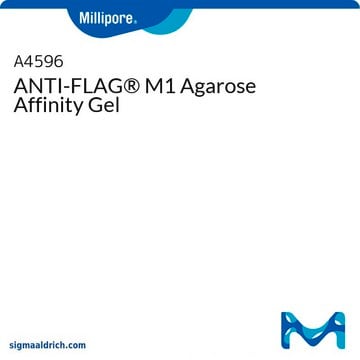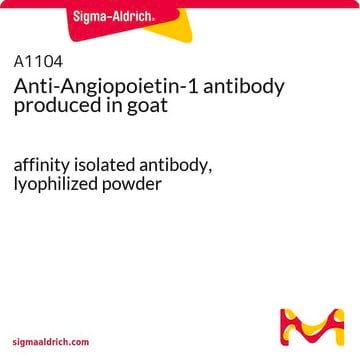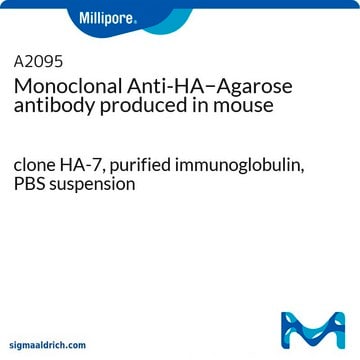A2220
Gel d′affinità ANTI-FLAG® M2
purified immunoglobulin, buffered aqueous glycerol solution
Sinonimo/i:
Anticorpo monoclonale ANTI-FLAG® M2, Gel d’affinità ANTI-FLAG® M2 in agarosio, Anti-ddddk, Anti-dykddddk
About This Item
Prodotti consigliati
Coniugato
agarose conjugate
Forma dell’anticorpo
purified immunoglobulin
Tipo di anticorpo
primary antibodies
Clone
M2, monoclonal
Forma fisica
buffered aqueous glycerol solution
Classi chimiche degli analiti
proteins
tecniche
affinity chromatography: suitable
immunoprecipitation (IP): suitable
Matrice
(4% agarose bead; 45-165μm bead size)
Isotipo
IgG1
Capacità
>0.6 mg/mL, resin binding capacity (FLAG-BAP)
Condizioni di spedizione
wet ice
Temperatura di conservazione
−20°C
Cerchi prodotti simili? Visita Guida al confronto tra prodotti
Descrizione generale
Eluizione - peptide FLAG®, Glicina, pH 3,5, peptide FLAG® 3x
Immunogeno
Applicazioni
Esplora tutti i dettagli di prodotto sul nostro portale dedicato alle applicazioni FLAG®.
Stato fisico
Note legali
Esclusione di responsabilità
Not finding the right product?
Try our Motore di ricerca dei prodotti.
Comunemente ordinati con questo prodotto
Prodotti correlati
Codice della classe di stoccaggio
10 - Combustible liquids
Classe di pericolosità dell'acqua (WGK)
WGK 1
Punto d’infiammabilità (°F)
Not applicable
Punto d’infiammabilità (°C)
Not applicable
Certificati d'analisi (COA)
Cerca il Certificati d'analisi (COA) digitando il numero di lotto/batch corrispondente. I numeri di lotto o di batch sono stampati sull'etichetta dei prodotti dopo la parola ‘Lotto’ o ‘Batch’.
Possiedi già questo prodotto?
I documenti relativi ai prodotti acquistati recentemente sono disponibili nell’Archivio dei documenti.
I clienti hanno visto anche
Articoli
The FLAG® Expression System is a proven method to express, purify and detect recombinant fusion proteins. Sigma®, the proven provider of FLAG®, now offers a magnetic bead for immunoprecipitation, protein purification, and the study of protein-protein interactions. The ANTI-FLAG® M2 Magnetic Bead is composed of murine derived, anti-FLAG® M2 monoclonal antibody attached to superparamagnetic iron impregated 4% agarose beads, with an average diameter of 50 µm. The M2 antibody is capable of binding to fusion proteins containing a FLAG peptide sequence at the N-terminus, Met-N-terminus, or C-terminus locations in mammalian, bacterial, and plant extracts.
Protocolli
Protocol for immunoprecipitation (IP) of FLAG fusion proteins using M2 monoclonal antibody 4% agarose affinity gels
Contenuto correlato
Protein purification techniques, reagents, and protocols for purifying recombinant proteins using methods including, ion-exchange, size-exclusion, and protein affinity chromatography.
Tecniche, reagenti e protocolli per la purificazione di proteine ricombinanti mediante tecniche di cromatografia a scambio ionico, di esclusione dimensionale e di affinità.
Il team dei nostri ricercatori vanta grande esperienza in tutte le aree della ricerca quali Life Science, scienza dei materiali, sintesi chimica, cromatografia, discipline analitiche, ecc..
Contatta l'Assistenza Tecnica.














